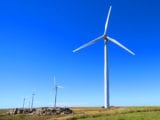
More and more hybrids are coming to American roadways, saving fuel, reducing carbon emissions and helping to reverse climate change due to global warming
By Glynn Wilson –
WASHINGTON, D.C. – Due to federal regulations, like it or not, automobile fuel economy has hit an all time high in the United States, while carbon dioxide emissions are now at a record low, according to a report from the Environmental Protection Agency.
Model year 2013 vehicles achieved an average of 24.1 miles per gallon (mpg), a 0.5 mpg increase over 2012 and an increase of nearly 5 mpg since 2004.
“Fuel economy has now increased in eight of the last nine years,” the agency said in a press release.
At the same time, the average carbon dioxide emissions are also at a record low of 369 grams per mile in model year 2013.
“Today’s announcement points to the greatness of American ingenuity and the strength of our auto industry,” EPA Administrator Gina McCarthy said in the announcement. “Our report shows that today’s vehicles are saving Americans money at the pump while emitting fewer greenhouse gasses.”
EPA’s report “Light-Duty Automotive Technology, Carbon Dioxide Emissions, and Fuel Economy Trends: 1975 through 2014” tracks average fuel economy of new cars and SUVs sold in the U.S. and ranks automakers’ achievements.
“We are thrilled to see that manufacturers continue to innovate and are bringing technologies to improve fuel economy online even faster than anticipated,” McCarthy said. “Consumers now have many more choices when shopping for vehicles with higher fuel economy and lower emissions compared to just five years ago. These choices reflect both a more diverse range of technology packages on conventional gasoline vehicles as well as more advanced technology and alternative-fueled vehicles.”
Some additional findings from the report show that the recent fuel economy improvement is a result of automakers’ rapid adoption of more efficient technologies such as gasoline direct injection engines, turbochargers and advanced transmissions.
Mazda vehicles averaged the highest fuel economy and lowest greenhouse gas emissions, according to the report, and Nissan achieved the greatest improvement in average fuel economy and greenhouse gas reductions. Even SUVs achieved the greatest improvement in all classes of new personal vehicles.
Under President Obama’s leadership, EPA and the Department of Transportation have implemented standards projected to double fuel economy by 2025 and cut vehicle greenhouse gas emissions by half.
The EPA estimates these standards will save American families more than $8,000 in fuel costs per vehicle by 2025. Throughout the duration of the program, Americans will save $1.7 trillion in fuel costs, use 12 billion fewer barrels of oil, and in 2025, reduce oil consumption by more than 2 million barrels a day – as much as half of the oil imported from OPEC every day.
For more on the report, see it on EPA’s Website.













